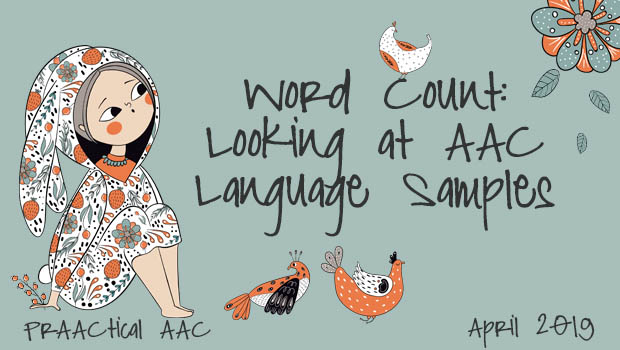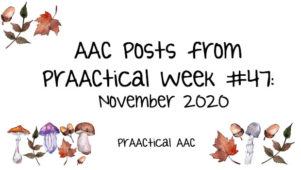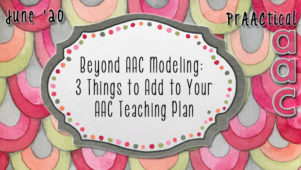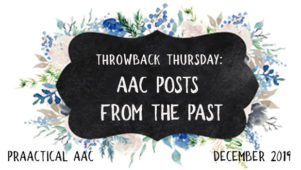Word Count: Looking at AAC Language Samples

Have you worked with students like these?
- 19-year-old Jaclyn has used a number of SGDs over the years with a moderate degree of success. Her language is very predictable and the team is concerned that Jaclyn’s progress has stalled.
- Judging by his progress on IEP goals, 9-year-old Mason has made wonderful strides in learning to use his AAC app. Of the hundreds of words that are available to him, Mason has only ever used about 50 and uses far fewer than that in day-to-day life.
- Sloan is fairly proficient with her AAC device and can easily answer questions, relay information, and share her thoughts and ideas. Her language is much less sophisticated than her middle school peers, though. While they often integrate some of the academic vocabulary words that they learn in science, language arts, math, and other classes into their conversation and writing, Sloan tends to stick to the same words over and over.
It can be puzzling when students make good progress on their communication goals, yet still use language that is below their capabilities. How can we better support these AAC learners?
One thing to think about is measuring the language they use in natural environments to look for generalization and internalization of skills that were previously taught. Knowing how these skills are used (or NOT used) in daily life gives us important information that can help us adjust our informal interactions and our instruction.
There are many ways to track language growth in AAC learners. In addition to formal testing, we routinely monitor progress on specific goals. Another useful strategy is to periodically collect a language sample and analyze it for the skills of interest.
To use language samples as a means of measuring growth over time, it helps to have a standard means of collecting the samples. A sample obtained in an informal conversation while leafing through magazines is going to yield different information than a sample obtained in small group work in the Math Center. Likewise, only compare conversational samples to other conversational samples. If you are going to track language use in writing samples, do that separately. Face-to-face and written language have different characteristics and we want to compare apples to apples.
Once you’ve obtained the language sample, here are some easy things to look for.
- Longest utterance (in words and/or morphemes)
- Mean length of utterance (in words and/or morphemes)
- Number of target words or language structures (e.g. subject-verb-object sentences, WH questions) used
- Total number of words used
- Number of different words used
Once you have data from #4 and #5, you can calculate a type-token ratio (TTR) to get a measure of the student’s overall lexical diversity. We calculate TTR by dividing the total number of different words (i.e., the types) in the language sample by the total number of words used (i.e., the token). As we look at Sloan’s data in the chart below, we are able to see that while the number of words she used each time did not differ greatly, she made significant gains in using a wider range of words.
| August | April | |
| Total # of words | 190 | 208 |
| Number of different words | 66 | 119 |
| Type-token ratio | .347 (35%) | .572 (57%) |
In general, we hope to see a high TTR, which demonstrates that a good variety of different words is being used, as opposed to a low TTR, which indicates low lexical variation. Rather than focusing on a specific ratio to aim for, get a baseline on your AAC learners and use it to measure change over time.
When skills taught in lessons or therapy aren’t translating into meaningful change outside of the instructional context, we know have work to do. In some cases, we re-trace our steps, and in others we add new goals that focus on generalization. It starts, though, with examining the language being used in daily life experiences.
Do you use strategies like these to consider how language is changing in real-world environments? We’d love to hear about them.
Filed under: Featured Posts, PrAACtical Thinking
Tagged With: generalization, language sample, lexical diversity, vocabulary
This post was written by Carole Zangari




